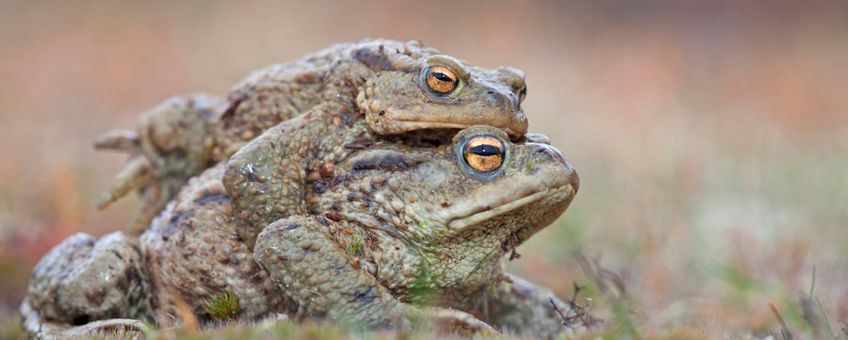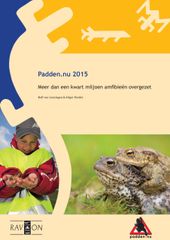
Growing success of toad patrols
RAVONEach spring, millions of amphibians leave their land habitat where they have spent the winter to their reproduction waters although not without risking their life; they often have to cross a road. Due to this, hundreds of thousands of toads, frogs and newts are killed by the traffic. All over the Netherlands, hundreds of volunteers are actively engaged in ensuring that these amphibians cross the road safely.
Spring migration
The winter of 2015 was fairly mild and the first amphibians were helped across the roads in early February. However, the spring migration did not continue because of a period of cold nights. In early March, conditions were more suitable and several thousand animals were ferried over the road. Still, the migration did not really get going until later in the month, peaking on 28th March with more than 16,000 amphibians being brought to safety. Amerongen, a small, quiet town on the Utrecht Hill Ridge, a glacial moraine in the centre of the Netherlands, was the top location with a total of 11,467 amphibians.
Toad patrol project Padden.nu
There are probably about 110 toad patrol groups active in the Netherlands, 86 of which have joined the project Padden.nu and their number is growing. On average, each group ferried 2,457 amphibians across the road in 2015. Based on these data, we can estimate that the total number of amphibians helped last year is over 270,000. Assuming each animal has an average length of 7 centimetre, putting them nose to tail results in a queue of nearly 19 kilometres long.
Spring migration 2016
Due to the mild winter weather, the first amphibians of 2016 were ferried across the roads in January. At the end of February, due to a combination of relatively high temperatures and heavy rainfall, the migration started up again, and some 3,000 animals were brought to safety. However, in March, lower night temperatures delayed the abundant migration of amphibians; the peak was reached in the first week of April with almost 17,000 animals being helped to safety. And the more animals that are transferred to safety, the more that get the chance to reproduce.
Detailed results of the spring migration of 2015 can be read in the report Padden.nu 2015 (pdf; 1.9 Mb, Dutch)
Text: Jelger Herder & Rolf van Leeningen, RAVON
Photos: Jelger Herder, Digital Nature (leadphoto: migrating Common Toad (Bufo bufo))

